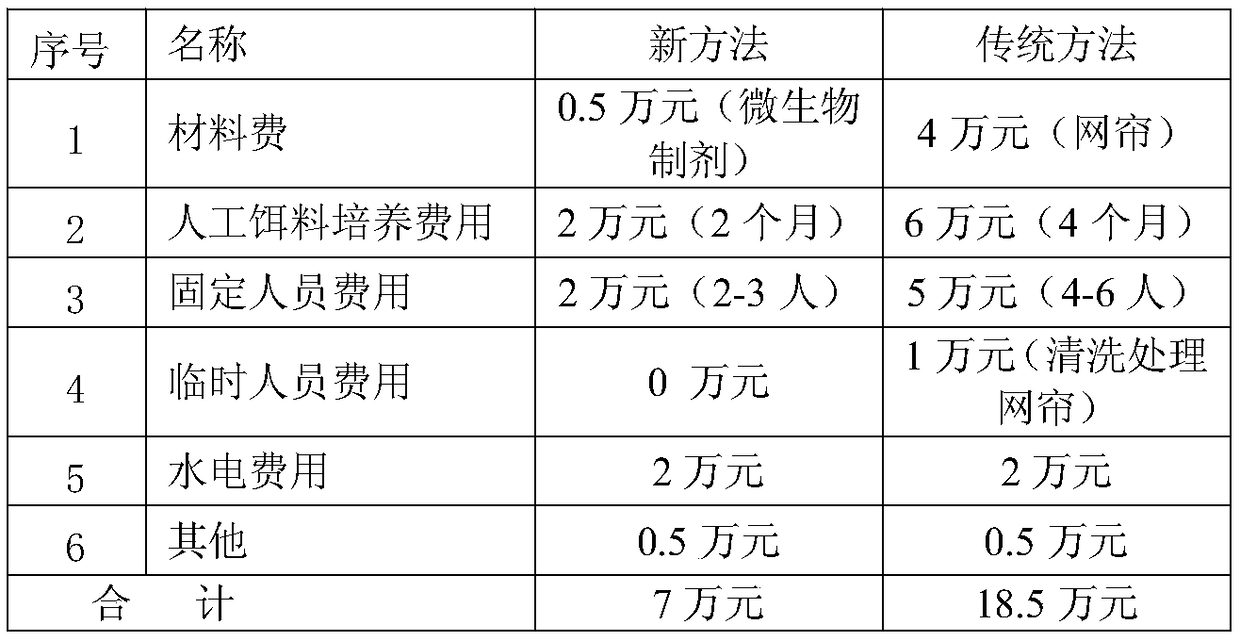Ecological aggregation breeding method of clam seedlings
A polymeric, clam technology, applied in application, climate change adaptation, fish farming, etc., can solve the problems of high cost and low efficiency of large-scale production of clam seed, achieve high efficiency utilization, and avoid the use of antibiotics. , The effect of simplifying the operation process
- Summary
- Abstract
- Description
- Claims
- Application Information
AI Technical Summary
Problems solved by technology
Method used
Image
Examples
Embodiment Construction
[0025] The present invention will be described in detail below in conjunction with examples.
[0026] The clam seed ecological aggregation type breeding method comprises the steps:
[0027] 1) Use sandy and mud-bottom culture ponds near the sea as water sources for seedlings. Clean up the ponds from April to May, empty the large multicellular algae such as steel wire algae in the ponds, and expose them to the sun for 7 days; Disinfect the pond and soak it in water for 3 days; during the spring tide period, it will receive the tide repeatedly for 3 days, and fill the pond with fresh seawater.
[0028] 2) At the end of May, single-cell algae bait culture was started in the seaside aquaculture pond; the algae used included: Isochrysis, Chrysoflagellate, Chaetoceros and Phytophthora.
[0029] 3) Select cockles in the Jimo sea area as broodstock. After the natural seawater temperature rises to 24°C in June, samples are taken every 3 to 5 days for gonad inspection. Boxes are trans...
PUM
 Login to View More
Login to View More Abstract
Description
Claims
Application Information
 Login to View More
Login to View More - R&D
- Intellectual Property
- Life Sciences
- Materials
- Tech Scout
- Unparalleled Data Quality
- Higher Quality Content
- 60% Fewer Hallucinations
Browse by: Latest US Patents, China's latest patents, Technical Efficacy Thesaurus, Application Domain, Technology Topic, Popular Technical Reports.
© 2025 PatSnap. All rights reserved.Legal|Privacy policy|Modern Slavery Act Transparency Statement|Sitemap|About US| Contact US: help@patsnap.com

